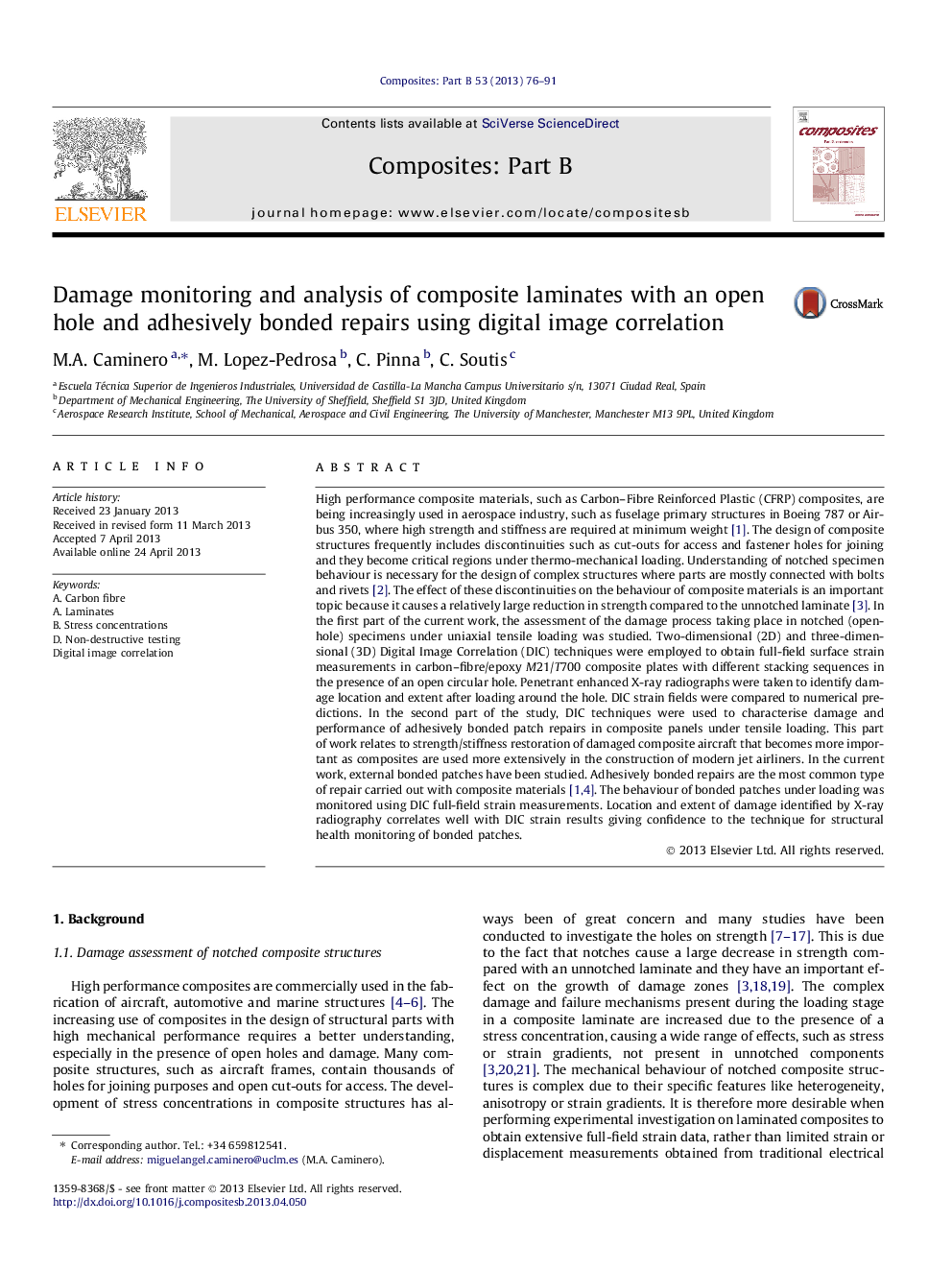| Article ID | Journal | Published Year | Pages | File Type |
|---|---|---|---|---|
| 818168 | Composites Part B: Engineering | 2013 | 16 Pages |
High performance composite materials, such as Carbon–Fibre Reinforced Plastic (CFRP) composites, are being increasingly used in aerospace industry, such as fuselage primary structures in Boeing 787 or Airbus 350, where high strength and stiffness are required at minimum weight [1]. The design of composite structures frequently includes discontinuities such as cut-outs for access and fastener holes for joining and they become critical regions under thermo-mechanical loading. Understanding of notched specimen behaviour is necessary for the design of complex structures where parts are mostly connected with bolts and rivets [2]. The effect of these discontinuities on the behaviour of composite materials is an important topic because it causes a relatively large reduction in strength compared to the unnotched laminate [3]. In the first part of the current work, the assessment of the damage process taking place in notched (open-hole) specimens under uniaxial tensile loading was studied. Two-dimensional (2D) and three-dimensional (3D) Digital Image Correlation (DIC) techniques were employed to obtain full-field surface strain measurements in carbon–fibre/epoxy M21/T700 composite plates with different stacking sequences in the presence of an open circular hole. Penetrant enhanced X-ray radiographs were taken to identify damage location and extent after loading around the hole. DIC strain fields were compared to numerical predictions. In the second part of the study, DIC techniques were used to characterise damage and performance of adhesively bonded patch repairs in composite panels under tensile loading. This part of work relates to strength/stiffness restoration of damaged composite aircraft that becomes more important as composites are used more extensively in the construction of modern jet airliners. In the current work, external bonded patches have been studied. Adhesively bonded repairs are the most common type of repair carried out with composite materials [1] and [4]. The behaviour of bonded patches under loading was monitored using DIC full-field strain measurements. Location and extent of damage identified by X-ray radiography correlates well with DIC strain results giving confidence to the technique for structural health monitoring of bonded patches.
